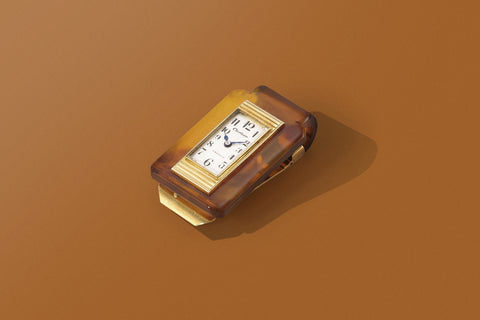The Barometer
The name Jaeger-LeCoultre needs no introduction, as they are already well-known for producing wristwatches such as the Reverso and the Memovox, as well as for creating an imaginative array of horological objects. Intriguingly, this clock marks a time before Jaeger merged with LeCoultre to form the brand we know today, as evidenced by the small signature found at the centre of the dial.
In particular, this piece is an aneroid barometer, a non-liquid barometer that relies on an air-tight metal box instead of mercury. When the air pressure rises or falls, the box responds in turn, expanding or contracting as required. The box is attached to a spring, which is responsible for moving the hands on the dial. A smaller thermometer can be seen near the bottom of the dial, which keeps track of the temperature in Fahrenheit.
The Design
The piece combines two materials, clear glass and polished brass, which make this object a delightful contrast of light and depth. The brass ring encloses the two glass panes, on which are printed the indications and numerals in black.
The innermost ring calculates the altitude, while the second ring includes millibars, and the final ring is a hygrometer, which tracks the change in water vapor present in the air. The weather indications below the final ring say “Very Dry”, “Set Fair”, “Change”, “Much Rain”, and “Stormy”, and are rendered in a contrasting gold. The size of each of the three hands varies from a small brass triangle for the smallest ring, a thinner, needle-shaped indication for the second ring, and finally, a more stylised hand for the final meter.
The piece sits on a circular Bakelite and metal plinth, a solid material that still retains its satin finish. An attractive representative of the Art Deco period, this barometer is an excellent complement to a bookshelf or mantelpiece, somewhere it can be glanced at just before leaving the house.
If sold within the United Kingdom, this Jaeger Barometer will be subject to 20% VAT.






































































































































































































